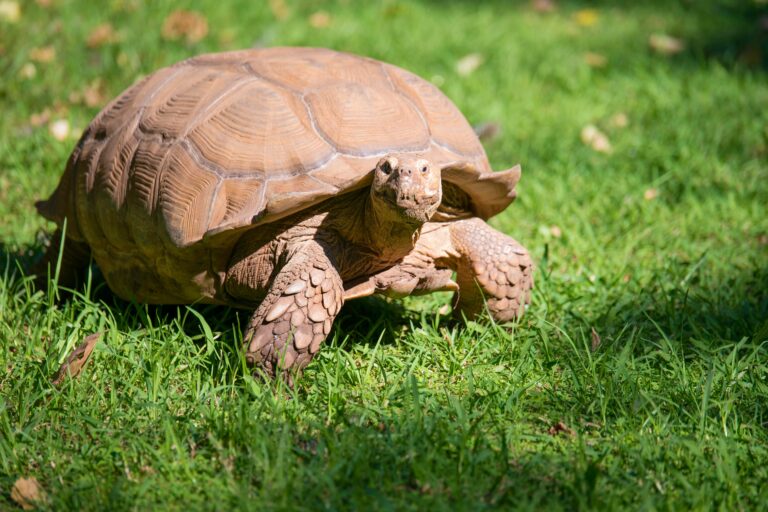Are Sulcata tortoise destructive? myths busted

Sulcata tortoises, known for their impressive size and graceful appearance, have long been kept as exotic pets. However, amid the praise, concerns have arisen about their possible destruction. In this article, we embark on a journey to uncover the truth behind the myth of the destructive nature of sulcata tortoises.
Before considering the question of destructiveness, it is important to understand the basic characteristics of the sulcata tortoise. Originating from the arid landscapes of Africa, these tortoises are celebrated for their resilience and adaptability. With their large size and robust build, they are well-equipped to thrive in challenging environments.

One of the main concerns surrounding sulcata turtles is their hunger. As herbivores, they tend to graze on plants, allowing them to consume enough as they grow. This behavior, if left unchecked, can result in overgrazing and damage to surrounding vegetation.
Adequate dietary management of sulcata tortoises is critical for resolving this issue. Providing a variety of grasses, leafy greens, and, on occasion, fruits helps provide their nutritional requirements while reducing the impact on plants. Pet owners can lessen the risk of damaging feeding behaviors by providing a balanced diet.

Controlling disruptive behaviors: Techniques for accountable property ownership:
An essential factor in lowering the perceived extinction of sulcata tortoises is responsible ownership. Pet owners can reduce harmful effects by taking proactive steps to understand their pets’ natural habits and environmental needs. Ensuring sufficient space, sustenance, and learning opportunities are fundamental to conscientious ownership.
Education and Knowledge: Dispelling the Myths:
To debunk myths regarding sulcata turtles’ apparent weakness, the public must be educated about these turtles. By increasing knowledge about these amazing reptiles’ natural history, behavior, and maintenance requirements, we may help people appreciate and understand them better. By acquiring knowledge, pet owners may decide which animals are suitable as pets and how best to care for them.
Assuming accountable ownership:
Ultimately, sulcata turtles are amazing animals with special requirements and behaviors rather than naturally harmful beings. The possibility of adverse effects can be reduced by prudent ownership, upkeep, and environmental enhancement. It is possible to develop a positive relationship between sulcata tortoises and their human companions by accepting the natural traits of these amazing animals and providing them with the necessary care.
Conservation Efforts: Conservation of natural habitats:
In addition to responsible ownership, conservation efforts play an important role in protecting sulcata turtles and their natural habitats. Habitat destruction and poaching are significant threats to wild populations, highlighting the importance of conservation measures.

Aid organizations dedicated to protecting turtles and their habitats can contribute to the conservation of these magnificent creatures. By advocating for habitat conservation, raising awareness of the plight of wild sulcata tortoises, and supporting conservation projects, individuals can have a meaningful impact on their future conservation.
Sulcata tortoises, with their striking presence and captivating behavior, have much to offer as companions and ambassadors for their species. By embracing the inherent qualities of sulcata tortoises and fostering a culture of respect and responsibility, we can build a harmonious relationship between humans and these magnificent creatures. Let us continue our efforts to protect and appreciate Sulcata tortoises, recognizing their intrinsic value and importance in the tapestry of life on our planet.
In conclusion, even if there are worries about the possible extinction of sulcata tortoises, controlling these issues requires responsible ownership, continuous study, and conservation initiatives. By giving these amazing reptiles the care they need, enhancing their surroundings, encouraging conservation efforts, and educating pet owners, we can lessen adverse effects and preserve a positive relationship with them. can encourage By working together and demonstrating commitment, we can make sure that Sulcata tortoises flourish in both captivity and the wild, adding to our quality of life and acting as representatives of their species.
Read More: Why is my Russian tortoise not eating?